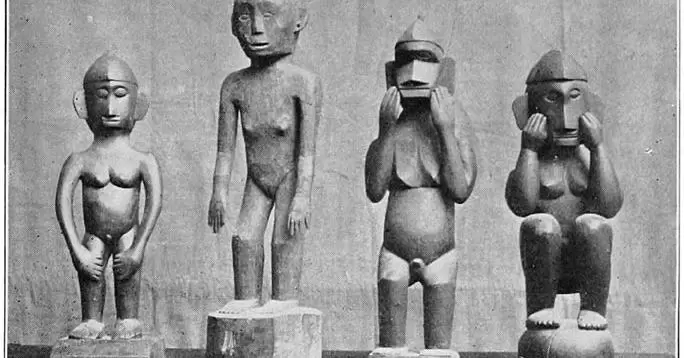Are you eager to know what is anito? Anitos, the ancestral spirits deeply woven into Filipino culture and folklore, hold a significant place in the spiritual beliefs and traditions of the Philippines. Explore the mystical world of anitos, their significance, and their enduring influence.
What Is Anito?
Introduction to Anitos will help you understand this concept in short.
Defining Ancestral Spirits:
Understanding Anitos: Introduce anitos as revered spirits in Filipino folklore, believed to be the spirits of ancestors or nature entities.
Cultural Significance: Highlight the importance of anitos in Filipino traditions, ceremonies, and beliefs.
Also Read : What Is Air Sous Vide?
Myths and Beliefs
Anito Mythology:
Ancestral Connections: Explore the belief that anitos act as guardians and protectors of families or communities, maintaining a connection between the living and the deceased.
Nature Spirits: Discuss how some anitos are believed to be spirits residing in natural elements like trees, mountains, or bodies of water.
Also Read : What Is The Net Stack Temperature?
Rituals and Practices
Reverence and Worship:
Offerings and Ceremonies: Explain traditional rituals, offerings, and ceremonies dedicated to honoring and appeasing anitos.
Cultural Traditions: Discuss how anitos are revered in various celebrations, such as fiestas or ancestral rites, showcasing their integral role in Filipino customs.
Contemporary Relevance
Anitos in Modern Times:
Cultural Preservation: Highlight efforts to preserve and promote anito folklore in contemporary Filipino society.
Art and Literature: Discuss how anitos continue to inspire artistic expressions, stories, and literature, keeping their legacy alive.
Understanding Anitos Today
Cultural Appreciation:
Respect and Understanding: Emphasize the importance of respecting anito beliefs and understanding their significance in Filipino culture.
Cultural Exchange: Encourage cultural exchange and learning, fostering appreciation for diverse spiritual beliefs and folklore.
To read about more informational things you have to visit ranyy.com
FAQ
What Is An Example Of An Anito?
The most widely venerated were balete trees (also called nonok, nunuk, nonoc, etc.) and anthills or termite mounds (punso). Other examples include mountains, waterfalls, tree groves, reefs, and caves.
What Is Anito Sculpture?
Wooden sculpture, called Anito. This term denotes both good and bad spirits. There are a large number of higher and lower spirits. So, the example. Ifugao-people able to distinguish a few thousand such beings with names, also the souls of men designated by death anitos.
Who Believes In Anito?
Anito. All Filipino religion has as its basis the idea of supernatural beings called anito, or sometimes diwata. Anito is an ancient and widespread concept in the East Indies, and comprises three levels of entity arrayed in a continuum of importance: deities or gods in the normal sense.
What Is The Meaning Of Anitism?
animism, belief in innumerable spiritual beings concerned with human affairs and capable of helping or harming human interests. Animistic beliefs were first competently surveyed by Sir Edward Burnett Tylor in his work Primitive Culture (1871), to which is owed the continued currency of the term.
Conclusion: Embracing the Mystique of Ancestral Anitos
Anitos, the revered spirits of Filipino folklore, stand as a testament to the rich tapestry of beliefs and traditions woven into the cultural fabric of the Philippines. Understanding and appreciating the mystique and significance of anitos offer a glimpse into the profound spiritual heritage of the Filipino people.
Exploring anitos isn’t just about folklore; it’s about acknowledging and honoring the profound connections between past, present, and the natural world that continue to resonate within Filipino culture.
I have addressed all the queries and topics mentioned below mentioned in this article
what is anito in philippines
what bpm is anito odays thats what you think
what is anito seeds?
anito sculpture
anito place of origin
anito religion
anito beliefs
anitism meaning
anito legends
pag-anito
anito in the philippines
